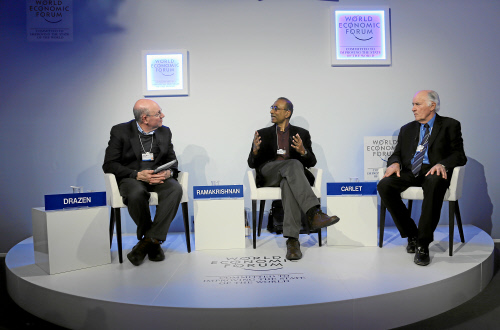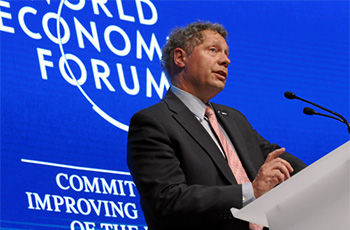Not all the news from Davos is mere pontificating. Some of the events and announcements relate to real work and accomplishment, especially in the key arena of life sciences and healthcare.
Among the announcements taking place at the World Economic Forum this week was the news that a coalition of private-sector organizations with global supply chain and injection safety expertise has partnered with Gavi, the Vaccine Alliance, to support children’s health in 73 of the poorest countries. Strong vaccine supply chains and injection safety are important factors in increasing vaccination coverage, maintaining vaccine confidence and improving child health in poor countries.
The three-year partnership between Gavi and the International Federation of Pharmaceutical Wholesalers (IFPW), a global association of pharmaceutical wholesalers focused on the storage and delivery of medicines, will bolster regional supply chain training centers in Benin and Rwanda, serving multiple countries in Africa.
“One of the largest obstacles to immunizing children in poor countries is getting the vaccines to them,” said Gavi CEO Dr Seth Berkley. “Vaccines are temperature sensitive, and the infrastructure in poor countries often is lacking. Partnerships, such as this one with IFPW which represents engagement of a whole new industry, are bringing new thinking and resources to help the Vaccine Alliance reach every child.” Since 2000, Gavi has contributed to the immunization of an additional 440 million children and the prevention of approximately 6 million future deaths.

IFPW, whose members include Walgreens Boots Alliance and McKesson-Celesio, will provide a package of support, including US$1.5 million in cash and member expertise to ensure that aspiring students in Gavi-supported countries receive the training needed to become the next generation of supply chain managers.
“IFPW and its partners are, by nature, experts in managing healthcare supply chains and cold chains such as those required for proper vaccine handling,” said Ornella Barra, IFPW’s chair and CEO of Wallgreens Boots Alliance, earlier this week. “We look forward to sharing our industry’s knowledge, expertise and resources with Gavi and its partners to strengthen developing countries’ medical supply chains and to improve the availability of and access to vaccines for the children who need them.”
Gavi is also working with UPS, which is leveraging the expertise of its Global Healthcare Logistics Strategy Group to assist Gavi in developing and implementing an executive training and mentorship program to enhance the capability of local supply chain leaders.
Additionally, Gavi also announced two partnerships focused on improving injection safety. These are:
- A new collaboration with Star Syringe, a UK-based medical research, design and development company, to leverage royalties on the company’s patented K1 auto-disposable syringe, which will provide up to US$2 million in cost savings to Gavi and developing countries;
- An agreement by the Indian company Hindustan Syringes & Medical Devices (HMD) to bring local knowledge and technical expertise, valued at up to US$1.5 million, in support of an upcoming WHO global injection safety campaign.
The new partnerships bring total private-sector contributions to Gavi to nearly US$230 million in cash and in-kind support, including those matched through the Gavi Matching Fund. Under the initiative, the UK’s Department for International Development and the Bill & Melinda Gates Foundation match contributions to Gavi from corporations, foundations, their members, customers, employees and business partners.
The new announcements come as Gavi partners and donors prepare to meet in Berlin next week under the patronage of German Federal Chancellor Dr. Angela Merkel to secure the US$7.5 million required to fund vaccine programs in the world’s poorest countries from 2016 to 2020.
This week’s World Economic Forum also featured a conversation with Nobel Laureate Craig Mello and Breakthrough Prize winner Jennifer Doudna on the genomics revolution. Watch the session, entitled “Rewriting Human Genes.” Yet another compelling session was called “The End of Antibiotics.” And Saturday, Jan. 24, a panel including the directors of the National Science Foundation and the National Institutes of Health, as well as experts from Belgium, Australia, Mexico and the UK, will address the Global Science Outlook.


